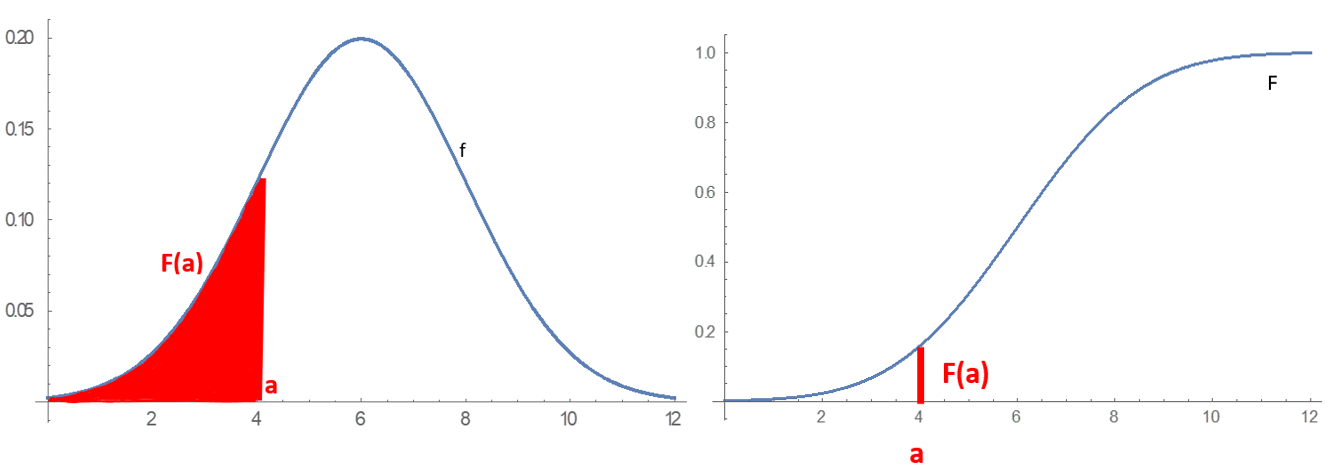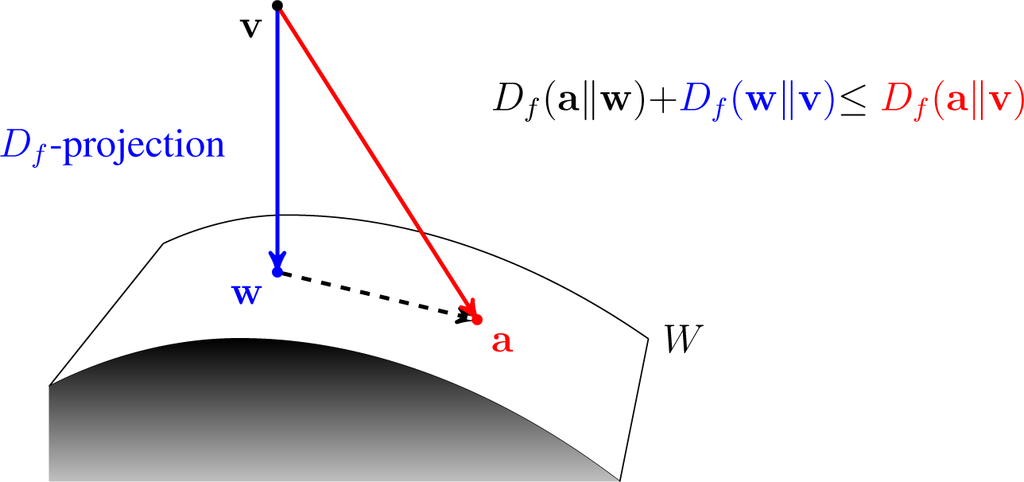|
Expectation Propagation
Expectation propagation (EP) is a technique in Bayesian machine learning. EP finds approximations to a probability distribution. It uses an iterative approach that uses the factorization structure of the target distribution. It differs from other Bayesian approximation approaches such as variational Bayesian methods. More specifically, suppose we wish to approximate an intractable probability distribution p(\mathbf) with a tractable distribution q(\mathbf). Expectation propagation achieves this approximation by minimizing the Kullback-Leibler divergence \mathrm(p, , q). Variational Bayesian methods minimize \mathrm(q, , p) instead. If q(\mathbf) is a Gaussian \mathcal(\mathbf, \mu, \Sigma), then \mathrm(p, , q) is minimized with \mu and \Sigma being equal to the mean of p(\mathbf) and the covariance of p(\mathbf), respectively; this is called moment matching. Applications Expectation propagation via moment matching plays a vital role in approximation for indicator functions ... [...More Info...] [...Related Items...] OR: [Wikipedia] [Google] [Baidu] |
Bayesian Inference
Bayesian inference ( or ) is a method of statistical inference in which Bayes' theorem is used to calculate a probability of a hypothesis, given prior evidence, and update it as more information becomes available. Fundamentally, Bayesian inference uses a prior distribution to estimate posterior probabilities. Bayesian inference is an important technique in statistics, and especially in mathematical statistics. Bayesian updating is particularly important in the dynamic analysis of a sequence of data. Bayesian inference has found application in a wide range of activities, including science, engineering, philosophy, medicine, sport, and law. In the philosophy of decision theory, Bayesian inference is closely related to subjective probability, often called "Bayesian probability". Introduction to Bayes' rule Formal explanation Bayesian inference derives the posterior probability as a consequence of two antecedents: a prior probability and a "likelihood function" derive ... [...More Info...] [...Related Items...] OR: [Wikipedia] [Google] [Baidu] |
Probability Distribution
In probability theory and statistics, a probability distribution is a Function (mathematics), function that gives the probabilities of occurrence of possible events for an Experiment (probability theory), experiment. It is a mathematical description of a Randomness, random phenomenon in terms of its sample space and the Probability, probabilities of Event (probability theory), events (subsets of the sample space). For instance, if is used to denote the outcome of a coin toss ("the experiment"), then the probability distribution of would take the value 0.5 (1 in 2 or 1/2) for , and 0.5 for (assuming that fair coin, the coin is fair). More commonly, probability distributions are used to compare the relative occurrence of many different random values. Probability distributions can be defined in different ways and for discrete or for continuous variables. Distributions with special properties or for especially important applications are given specific names. Introduction A prob ... [...More Info...] [...Related Items...] OR: [Wikipedia] [Google] [Baidu] |
Iterative
Iteration is the repetition of a process in order to generate a (possibly unbounded) sequence of outcomes. Each repetition of the process is a single iteration, and the outcome of each iteration is then the starting point of the next iteration. In mathematics and computer science, iteration (along with the related technique of recursion) is a standard element of algorithms. Mathematics In mathematics, iteration may refer to the process of iterating a function, i.e. applying a function repeatedly, using the output from one iteration as the input to the next. Iteration of apparently simple functions can produce complex behaviors and difficult problems – for examples, see the Collatz conjecture and juggler sequences. Another use of iteration in mathematics is in iterative methods which are used to produce approximate numerical solutions to certain mathematical problems. Newton's method is an example of an iterative method. Manual calculation of a number's square root is a c ... [...More Info...] [...Related Items...] OR: [Wikipedia] [Google] [Baidu] |
Variational Bayesian Methods
Variational Bayesian methods are a family of techniques for approximating intractable integrals arising in Bayesian inference and machine learning. They are typically used in complex statistical models consisting of observed variables (usually termed "data") as well as unknown parameters and latent variables, with various sorts of relationships among the three types of random variables, as might be described by a graphical model. As typical in Bayesian inference, the parameters and latent variables are grouped together as "unobserved variables". Variational Bayesian methods are primarily used for two purposes: # To provide an analytical approximation to the posterior probability of the unobserved variables, in order to do statistical inference over these variables. # To derive a lower bound for the marginal likelihood (sometimes called the ''evidence'') of the observed data (i.e. the marginal probability of the data given the model, with marginalization performed over unobserv ... [...More Info...] [...Related Items...] OR: [Wikipedia] [Google] [Baidu] |
Mean
A mean is a quantity representing the "center" of a collection of numbers and is intermediate to the extreme values of the set of numbers. There are several kinds of means (or "measures of central tendency") in mathematics, especially in statistics. Each attempts to summarize or typify a given group of data, illustrating the magnitude and sign of the data set. Which of these measures is most illuminating depends on what is being measured, and on context and purpose. The ''arithmetic mean'', also known as "arithmetic average", is the sum of the values divided by the number of values. The arithmetic mean of a set of numbers ''x''1, ''x''2, ..., x''n'' is typically denoted using an overhead bar, \bar. If the numbers are from observing a sample of a larger group, the arithmetic mean is termed the '' sample mean'' (\bar) to distinguish it from the group mean (or expected value) of the underlying distribution, denoted \mu or \mu_x. Outside probability and statistics, a wide rang ... [...More Info...] [...Related Items...] OR: [Wikipedia] [Google] [Baidu] |
Covariance
In probability theory and statistics, covariance is a measure of the joint variability of two random variables. The sign of the covariance, therefore, shows the tendency in the linear relationship between the variables. If greater values of one variable mainly correspond with greater values of the other variable, and the same holds for lesser values (that is, the variables tend to show similar behavior), the covariance is positive. In the opposite case, when greater values of one variable mainly correspond to lesser values of the other (that is, the variables tend to show opposite behavior), the covariance is negative. The magnitude of the covariance is the geometric mean of the variances that are in common for the two random variables. The Pearson product-moment correlation coefficient, correlation coefficient normalizes the covariance by dividing by the geometric mean of the total variances for the two random variables. A distinction must be made between (1) the covariance of ... [...More Info...] [...Related Items...] OR: [Wikipedia] [Google] [Baidu] |
Moment Matching
Moment or Moments may refer to: Science * Moment (mathematics), a concept in probability theory and statistics * Moment (physics), a combination of a physical quantity and a distance ** Moment of force or torque Time * Present time * An instant * Moment (unit), a medieval unit of time Technology * Moment space surveillance complex, a Russian military apparatus * Samsung M900 Moment, an Android phone Arts Film and television * ''Moment'' (film), a 1978 Yugoslav film * ''Moments'' (1974 film), a British drama starring Angharad Rees * ''Moments'' (1979 film), a French-Israeli film * ''Moments'' (talk show), a Philippine TV celebrity talk show Music and dance * Moment form, a musical concept developed by Karlheinz Stockhausen * ''Moment Rustica'' (ballet), a Martha Graham ballet * ''Momente'' or ''Moments'', a musical composition by Stockhausen * The Moments, American R&B vocal group Albums * A Moment, a 1994 album by Lalah Hathaway * ''Moment'' (Dark Tranquillity albu ... [...More Info...] [...Related Items...] OR: [Wikipedia] [Google] [Baidu] |
Indicator Functions
In mathematics, an indicator function or a characteristic function of a subset of a set is a function that maps elements of the subset to one, and all other elements to zero. That is, if is a subset of some set , then the indicator function of is the function \mathbf_A defined by \mathbf_\!(x) = 1 if x \in A, and \mathbf_\!(x) = 0 otherwise. Other common notations are and \chi_A. The indicator function of is the Iverson bracket of the property of belonging to ; that is, \mathbf_(x) = \left x\in A\ \right For example, the Dirichlet function is the indicator function of the rational numbers as a subset of the real numbers. Definition Given an arbitrary set , the indicator function of a subset of is the function \mathbf_A \colon X \mapsto \ defined by \operatorname\mathbf_A\!( x ) = \begin 1 & \text x \in A \\ 0 & \text x \notin A \,. \end The Iverson bracket provides the equivalent notation \left x\in A\ \right/math> or that can be used instead of \mathbf_\!(x). T ... [...More Info...] [...Related Items...] OR: [Wikipedia] [Google] [Baidu] |
Belief Propagation
Belief propagation, also known as sum–product message passing, is a message-passing algorithm for performing inference on graphical models, such as Bayesian networks and Markov random fields. It calculates the marginal distribution for each unobserved node (or variable), conditional on any observed nodes (or variables). Belief propagation is commonly used in artificial intelligence and information theory, and has demonstrated empirical success in numerous applications, including low-density parity-check codes, turbo codes, free energy approximation, and satisfiability. The algorithm was first proposed by Judea Pearl in 1982, who formulated it as an exact inference algorithm on trees, later extended to polytrees. While the algorithm is not exact on general graphs, it has been shown to be a useful approximate algorithm. Motivation Given a finite set of discrete random variables X_1, \ldots, X_n with joint probability mass function p, a common task is to compute ... [...More Info...] [...Related Items...] OR: [Wikipedia] [Google] [Baidu] |
TrueSkill
TrueSkill is a skill-based ranking system developed by Microsoft for use with video game matchmaking on the Xbox network. Unlike the popular Elo rating system, which was initially designed for chess, TrueSkill is designed to support games with more than two players. In 2018, Microsoft published details about an extended version of TrueSkill, named TrueSkill2. It is based on a Thurstonian model with a Gaussian score distribution. It does not satisfy Luce's Choice Axiom. Calculation A player's skill is represented as a normal distribution \mathcal characterized by a mean value of \mu (mu, representing perceived skill) and a variance of \sigma (sigma, representing how "unconfident" the system is in the player's \mu value). As such \mathcal(x) can be interpreted as the probability that the player's "true" skill is x. On Xbox Live, players start with \mu = 25 and \sigma = 25/3; \mu always increases after a win and always decreases after a loss. The extent of actual updates depends ... [...More Info...] [...Related Items...] OR: [Wikipedia] [Google] [Baidu] |
Machine Learning
Machine learning (ML) is a field of study in artificial intelligence concerned with the development and study of Computational statistics, statistical algorithms that can learn from data and generalise to unseen data, and thus perform Task (computing), tasks without explicit Machine code, instructions. Within a subdiscipline in machine learning, advances in the field of deep learning have allowed Neural network (machine learning), neural networks, a class of statistical algorithms, to surpass many previous machine learning approaches in performance. ML finds application in many fields, including natural language processing, computer vision, speech recognition, email filtering, agriculture, and medicine. The application of ML to business problems is known as predictive analytics. Statistics and mathematical optimisation (mathematical programming) methods comprise the foundations of machine learning. Data mining is a related field of study, focusing on exploratory data analysi ... [...More Info...] [...Related Items...] OR: [Wikipedia] [Google] [Baidu] |

